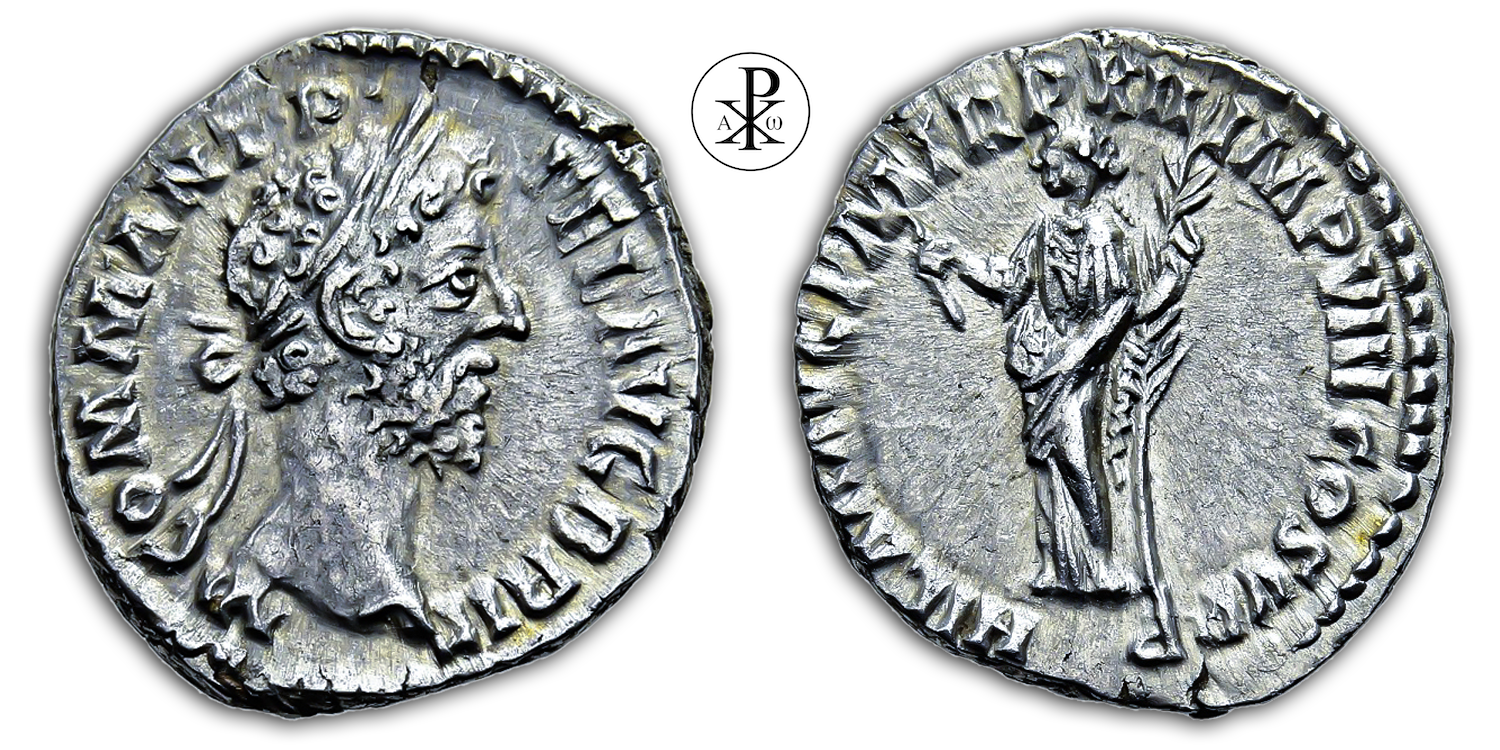Imperator Caesar Marcus Aurelius Commodus Antoninus Augustus
Reign: Commodus
Mint: Rome
Date: 187 AD
Nominal: Denarius
Material: Silver
Diameter: 18mm
Weight: 3.01g
Reference: RIC III Commodus 150a
OCRE Online: http://numismatics.org/ocre/id/ric.3.com.150A
Rare: R1
Provenance: Gorny & Mosch Numismatik Munich, Germany (Auction 294, Lot 567)
Pedigree: –
Obverse: Head of Commodus, laureate, right
Inscription: M COMM ANT P FEL AVG BRIT
Translation: Marcus Commodus Antoninus Pius Felix Augustus Britannicus
Translation: Marcus Commodus Antoninus, the pious, the fortunate, Augustus, conqueror of the Britons
Reverse: Hilaritas, draped, standing left, holding branch in right hand and long palm, nearly vertical, in left hand
Inscription: HILAR AVG P M TR P XII IMP VIII COS V P P
Translation: Hilaritas Augusti, Pontifex Maximus, Tribunicia Potestate Duoecima, Imperator Octavum, Consul Quintum, Pater Patriae
Translation: Joy of the Augustus. High priest, holder of tribunician power for the twelfth time, Imperator for the eighth time, consul for the fifth time, father of the nation
Comment: Hilaritas was a Roman personification of serenity and cheerfulness. She was often depicted holding a long foliaged branch of palm in her right hand, which was stuck in the ground. Green branches are the sign of gladness; and thence among all nations, on occasions of both public and private, it was the custom to ornament streets, temples, gates, houses, and even entire cities, with branches and leaves of trees. In her left hand she holds the cornucopia; sometimes a patera supplies the place of a branch; sometimes a hasta; at other times a flower. Somewhat unusual about the depiction of this coin is the olive branch in her left hand. Hilaritas was also an epithet of the oriental mother goddess Kybele, who as Magna Mater in Rome had a sanctuary on the Palatine Hill. This deity was especially honoured every year on 25 March with the so-called Feast of Hilaritas, which in 187 AD furthermore became a celebration of the emperor’s salvation.
When in 186 AD the band of robbers of Maternus, who were marauding in Spain and Gaul, received the news that Commodus had assembled an army against the rebels – Maternus was able to escape to Italy with some of his people. Around the beginning of 187 AD, he probably arrived there and made a plan to assassinate Commodus. Maternus and his followers wanted to disguise themselves as praetorians at the Feast of Hilaria and kill the emperor. However, he was betrayed by his own people, so that the plot was discovered and prevented before the festival. Maternus and his followers were then immediately beheaded. The grateful ruler then chose the personification of Hilaritas as a coin motif. On this denarius she wears rather unusual attributes: the branch of the goddess of peace Pax and the palm frond of the goddess of victory Victoria. Possibly this was intended to express a connection between the joy and well-being of the subjects, peace in the empire and the victoriousness of the emperor. This also shows how cleverly Roman iconography could convey complex messages by combining different attributes and symbols.
The minting and issue of this type of denarius must therefore have taken place shortly before, during or after the feast of Hilaria (25 March 187 AD).
